Portrait Of The Artist: Matthew Hilton
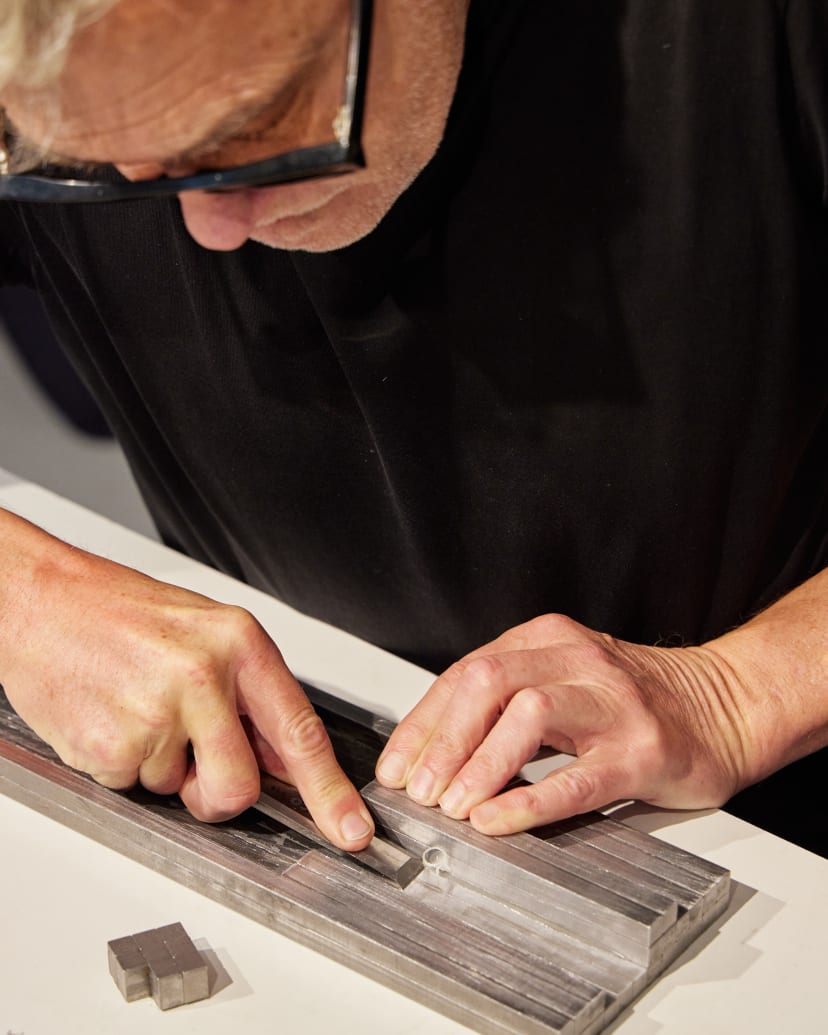
To prep for the opening of Tough Moment, Matthew’s new exhibition at our Mayfair shop, we visited the sculptor and furniture designer’s studio to take a look behind the scenes.
In many ways, Tough Moment – furniture designer Matthew Hilton’s (@matthewhiltonsculpture) new exhibition – is a full circle moment, at least when it comes to Paul Smith’s involvement. The celebrated furniture designer first met Paul in the 1980s when he sold him some silver candle sticks to sell in our Covent Garden shop on Floral Street and, as fate (or the London social scene at the time) would have it, the two kept crossing paths.
Decades later, it’s another Paul Smith shop that’s playing host to Matthew’s wares. This time – for the first time in fact – he’s showing a new series of sculptures in the Mayfair gallery space of our Albemarle Street shop. Ahead of the opening, we caught up with him in his studio to discuss his process, why he prefers sketching on his iPad and why he wouldn’t be happy if he wasn’t creating.
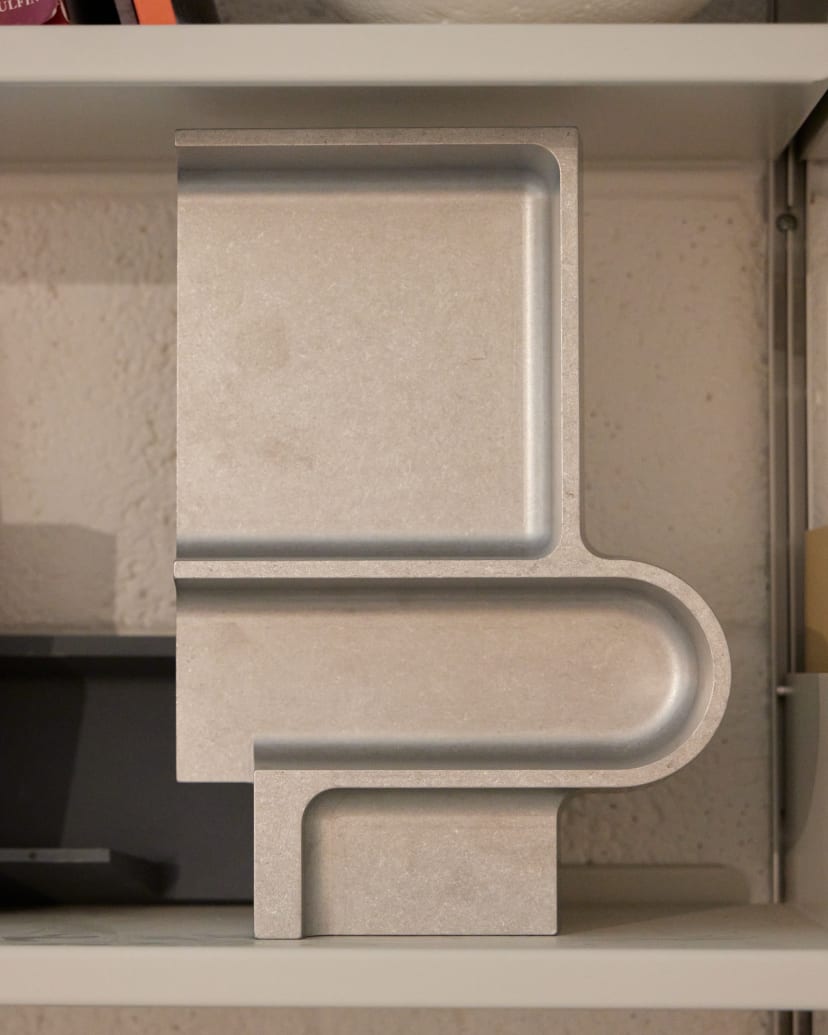
Why do you work primarily in metal?
Working closely with metal is a relatively new experience for me. Having spent most of my career working with wood, choosing metal forces a fresh approach and offers a unique set of qualities that fits my current interests and creative process. I am trying to exploit the weight, the technical challenges, and industrial influences all contribute to the character and visual language of my sculptures.
I am aiming to create pieces that embody strength, weight and permanence and a dialogue between form, function, emotion, and production. The substantiality and heft of the material add to physical presence. The process of shaping metal to produce these pieces requires a level of precision and craftsmanship that I find demanding and rewarding.
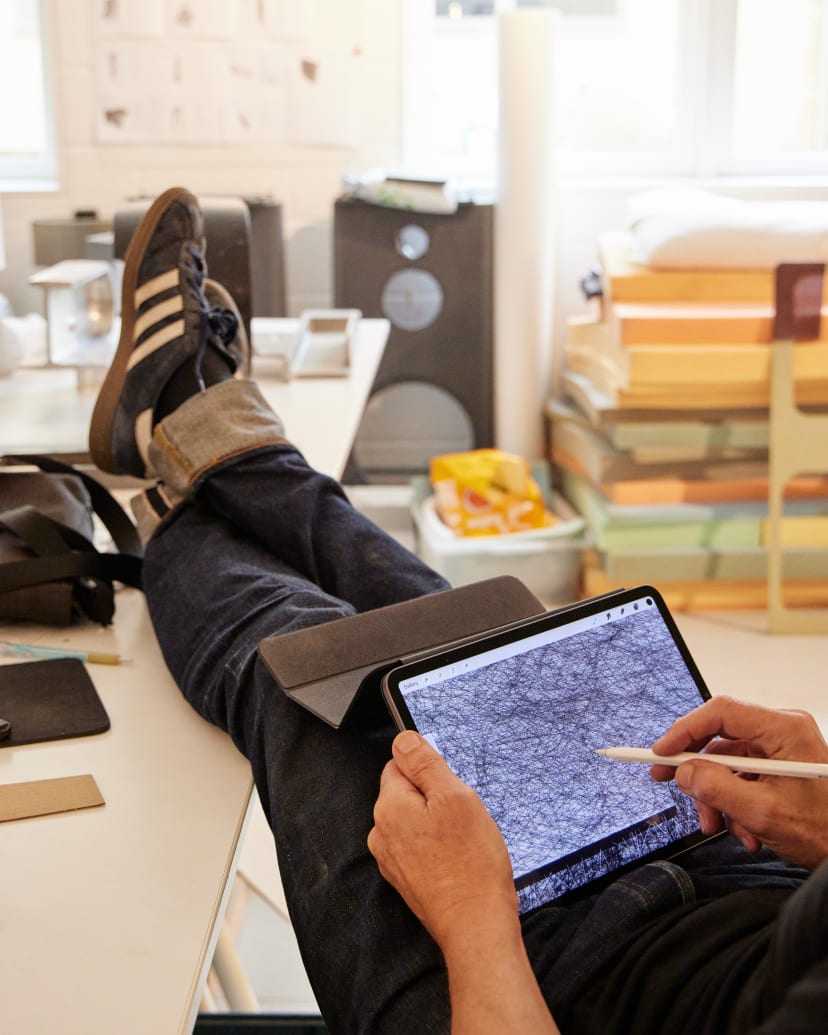
Where do you find inspiration?
Everywhere. In architecture, art, design, nature, music, everywhere. I love witnessing things being made, it is ingenuity and problem-solving made visible. I love workshops, factories, ceramic studios, shoemakers, every way of making anything. I have visited hundreds of factories all over the world. I have seen a wide spectrum of ways of making, from watches and precision optics being made in lab-like places, to wood furniture carved by men sitting cross legged on an earth floor.
The roots of the pieces in Tough Moment are in many years of seeing components in factories, part assembled, part machined, unfinished castings. I work in the way I know best, drawing and 3D modelling on my iPad and assisted by 3D printing at scale and then full-size model making using car body filler and spray paints, combined with renders, pencil drawings, prints… the physical working tools may be from the design world, but the thought process is completely different.
Usually, I have no idea why I am trying to make something, or what it is, it is really a stumble in the dark, frustrating, and difficult and to what end!? It is easier to look back and see where I was trying to go than explain when I am in the middle of it.
At the heart It is a personal exploration of form, abstract but with memory or hints of landscape and industry, or the world of trees, rocks, the human figure, also the city and industrial landscape with its remains and fragments of man-made objects and structures. Although primarily non-representational, these pieces contain echoes of these things. Some hint of decay of industry. They are my responses to my experience, organised, and structured within parameters dictated by myself and the characteristics and special qualities of the materials I have chosen.

What do you hope people take away from your art?
This show is called Tough Moment – this title has been carefully considered to represent many things. Clearly the materials are tough and heavy. The making is tough and heavy. But also, the transition to sculpture from furniture design has been a series of tough moments. I have had to question myself, analyse, work on allowing my mind to explore more, dig and mix up stuff.
Then there’s the referencing of the word ‘moment’ as a mechanical term. In many of the pieces, balance, and symmetry of structure – both physical and metaphorical – is evident.
There are references to intimate relationships through duality and singularity, splits, joins and what is between. The glue and the space, the attraction and rejection.
I hope people will recognise those elements, but I know that people will see different things and, in the end, I welcome that. This being my first ever show I am supremely interested in how people will respond. The work is a genuine reflection of myself, and I hope that observers will recognise that reality and passion. Art is obviously a subjective and personal experience, and people will engage with it in their own unique ways.
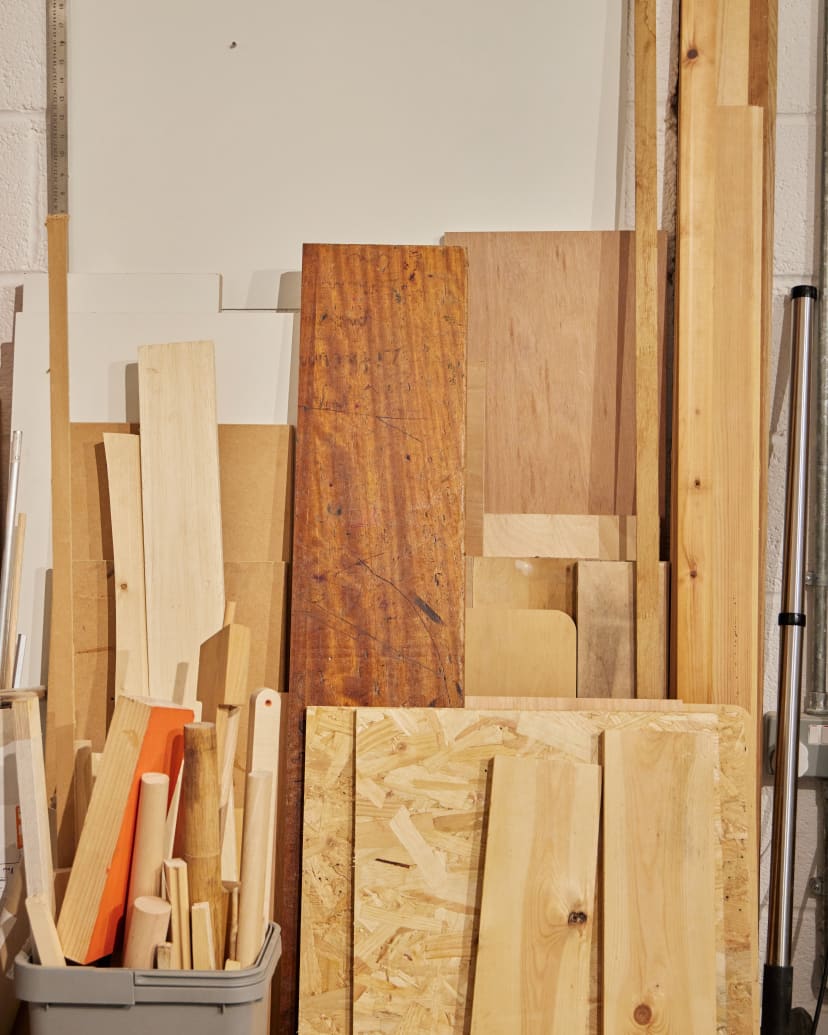

How does being an artist affect your outlook on life?
Makes me happy! I have noticed that I seem to be near obsessive of the things that interest me and can totally miss stuff that doesn’t. I have learnt to never pass by something that my mind shows even a tiny bit of interest in. I photograph all the time and am constantly looking or thinking about what to make, how to make it, what have other people done, what do I like?
I know that being creative has significantly influenced my outlook on life, forming the way I see and interact with the world. It has brought about a heightened sense of awareness and an appreciation for the beauty and intricacies that exist in everyday ordinary moments. It sometimes feels like a cliche, something a bit fake – a pose – but I know that if I walk past something that caught my eye and I don’t go take a closer look then eventually I have to return or find something similar and take a proper note, but sometimes you can’t go back!
My work has taught me the value of vulnerability and risk-taking. It encourages me to step outside my comfort zone, to experiment with new techniques and ideas, and to embrace the uncertainty that comes with the creative process. I take risks and make mistakes, but those things very often pay off.

How do you feel while you’re working? What’s going through your mind?
Things happen best if I can get into a state of flow where I am fully immersed in the act of creating. It is a sense of relaxation and freedom, allowing exploration and experimentation.
In this state of creative flow, the experience of engagement and focus, the outside fades away. I am deeply absorbed in the process. It's a space where time can feel suspended, and there is a sense of being fully present in the act of creation.
I follow instincts and intuition, allow my subconscious to guide my choices, play around with forms and ideas without thinking. It's a time for open exploration, where I allow myself to be receptive to the unexpected. For the first time in my working life, I have no brief, no client, no structure, no real limits – the boundaries are decided by me. There are financial limits, but the creative boundaries do not exist. So, what do I want to do? I try not to ask ‘why’ too much.
Do you have a particular routine or any “rituals” when you’re working?
Music is really important – no lyrics – or if there are lyrics, they must be songs I know so well I am not consciously listening to the words, or the meanings. Jazz is good for me to work to.
I have to clear my mind, be in a tidy enough place and comfortable, then get my mind wondering without judgement – but at the same time making absolute emphatic choices. It is a strangely contradictory process.
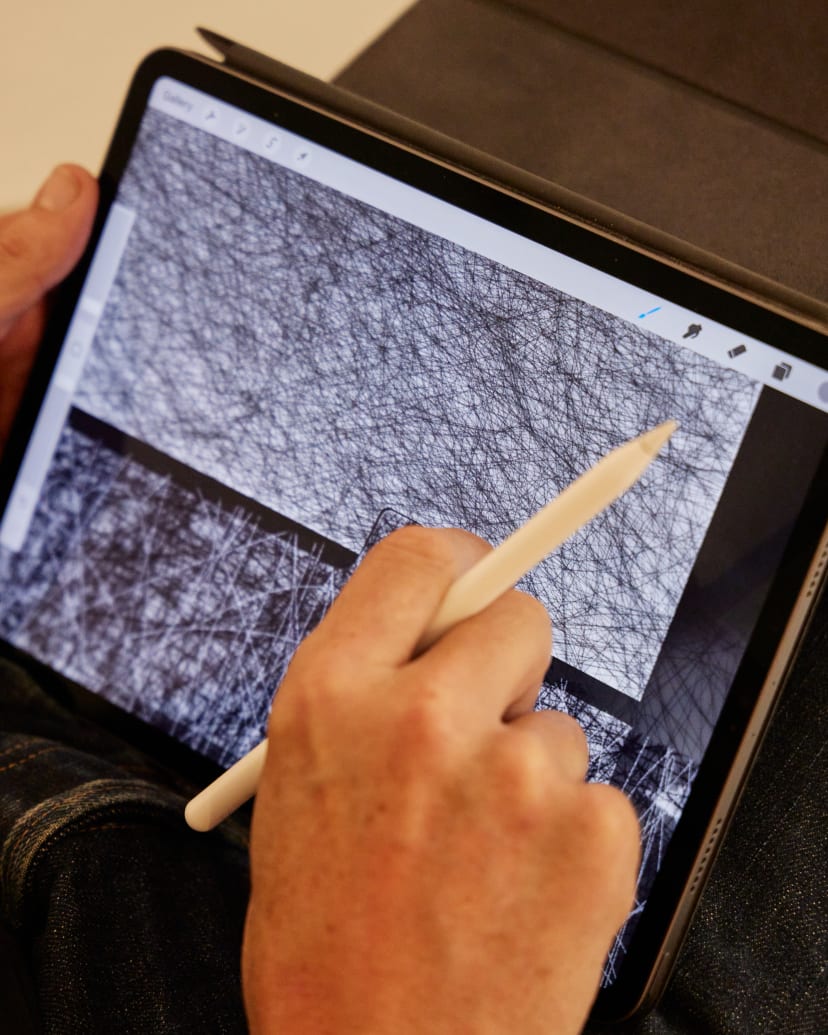
What does your typical working day look like?
I always go out for two coffees – unless there is not a decent place nearby. Then back and get on with it… Draw a bit on my iPad, some emails, some calls, a bit of model making. Go to see a supplier or maker, take some part finished piece from one process to the next… There isn’t a typical day really.
If you weren’t an artist, what would you do and why?
I would not be happy if I could not make something. Most of my life I have been a designer so in that sense there is the answer. If it wasn’t furniture, it would be something else – from building wood frame houses to designing cars or motorbikes. Making and creating things is the only thing I can imagine being happy doing and is how I have chosen to live, even when it’s been really tough financially.
Click here to take a virtual tour of the exhibition.
Discover More
Sign Up For Updates
Words: Molly Isabella Smith
Photos & Film: Oliver Thompson

